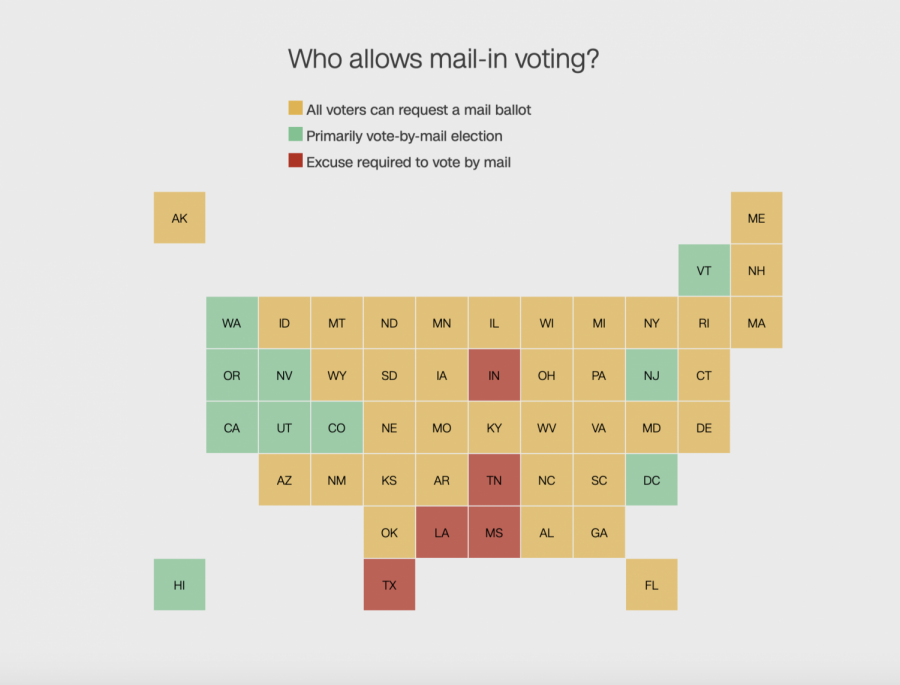Mail-In Voting: How It Works
October 16, 2020
Since the beginning of election season, there has been controversy over mail-in voting. There have been several divides between the Republicans and Democrats regarding this voting option, but let’s be honest; we all hear about the political aspects of mail-in voting, but do we really know how it works?
Mail-in voting has become a popular option this year because of many citizens’ concerns about their health due to coronavirus. More people are asking for absentee and mail-in ballots instead of the typical in-person voting where citizens walk into a certified voting booth to cast their ballots.
There has been some disagreement regarding mail-in voting with President Donald Trump publicly questioning the reliability of mail-in voting and the United States Postal Service.
“Republicans should fight very hard when it comes to statewide mail-in voting,” Trump tweeted to @foxandfriends. “Democrats are clamoring for it. Tremendous potential for voter fraud, and for whatever reason, doesn’t work out well for Republicans.”
However, commentators and organizations like the US Public Research Interest Group and Brennan Center for Justice say this method is safe.
“It is hands down the safest method of voting – especially as we continue to weather the COVID-19 pandemic,” CEO of the League of Women Voters Virginia Kase said. “Voting by mail is also one of the most convenient options because it allows you to cast your ballot from the comfort of your home.”
Counting the votes will take much longer than usual because many states are allowing extra time for mail-in ballots to arrive after Election Day, as long as they are postmarked on or before November 3rd.
Absentee voting allows citizens to vote by mail. While every state has this option, certain rules qualify individuals for this choice. There is also a designated early voting period. In some states, people can cast an in-person absentee ballot before Election Day. Citizens are required to request an absentee ballot, and for some states, you must submit a valid excuse too.
To find out if you’re eligible for mail-in voting, you can check Vote411.org to review your state’s requirement; it also has a first-time voter checklist for those who are new to the voting process.
Vote.org also provides useful resources that include guidelines for casting mail-in ballots for each state; it has forms that voters can use to request the ballots themselves. Deadlines are very important regarding mail-in voting as they vary greatly by each state.
Regardless of how you choose to vote, whether it be in-person or absentee, if you are eligible, VOTE. A vote is a vote, and it’s our civic duty to participate in voting. Your vote matters, and it will make a difference in the 2020 elections. If you haven’t requested an absentee ballot yet, make sure you make arrangements to get to your polling place on November 3, and eligible students should make plans to vote before or after school that day. Get out there and vote, vote, vote!




